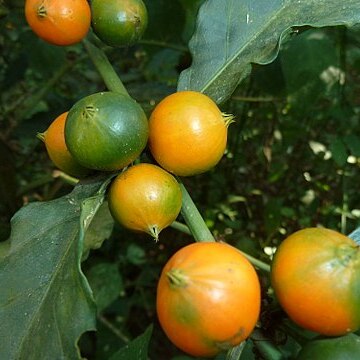Corolla white, or red or purple (not in the Flora Zambesiaca area), glabrous outside; tube not markedly long, cylindrical at the base and campanulate or funnel-shaped above or cylindrical and widening only near apex, ± glabrous to sparsely pubescent within; lobes short and erect or longer and erect or spreading.
Ovary 2-locular; placentas rather fleshy, subpendulous, bearing 6–25 ovules, ovules not immersed; style slender, glabrous; pollen presenter included or exserted, winged, mitriform or scarcely so at apex, shortly bifid.
Inflorescences of small cymes, lateral at successive nodes (TAB. 75/6) or axillary on both sides of the stem at the same node (not in the Flora Zambesiaca area), moderately lax or condensed; bracteoles present.
Leaves petiolate; domatia absent or present as small tufts of hairs in the axils of the lateral nerves; stipules green in dry state, erect, persistent, scarcely connate at the base.
Stamens inserted in broad part of corolla tube; anthers subsessile, attached near the base, entirely included or up to 2/3 exserted, shortly apiculate; pollen in tetrads.
Seeds quite large, 4.5–6 mm across, somewhat compressed or not, fleshy; testa ornamented with fine narrow reticulations.
Calyx tube turbinate to ellipsoid; limb-tube with a distinct tubular part and narrowly triangular lobes.
Flowers hermaphrodite, 5-merous, subsessile to shortly pedicellate.
Fruit globose to ellipsoid, crowned by a persistent calyx limb.
Shrubs or small trees.

